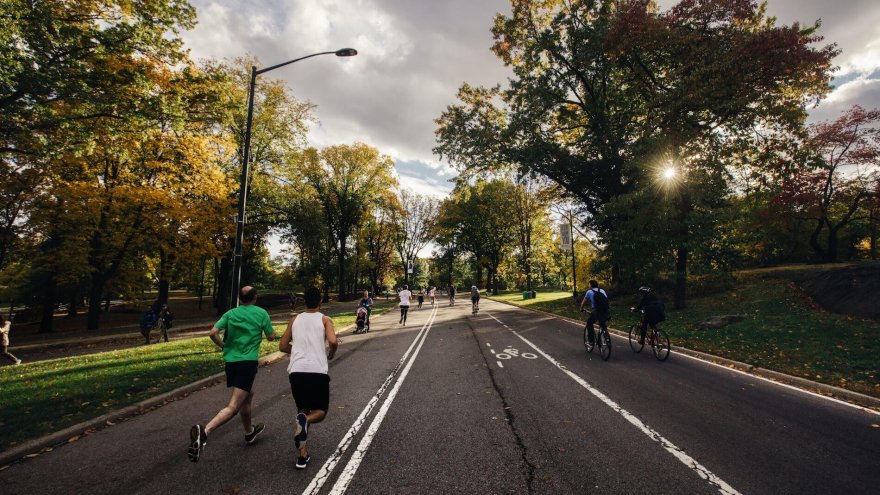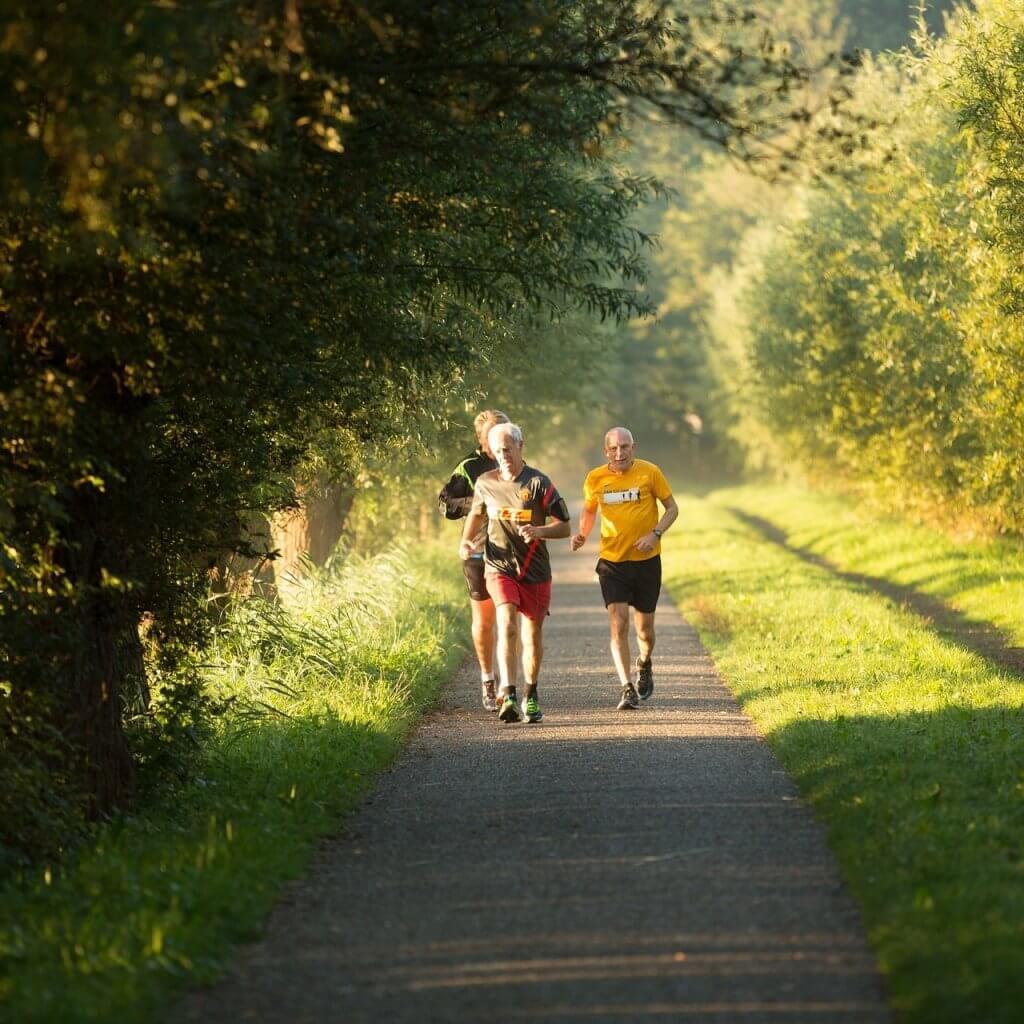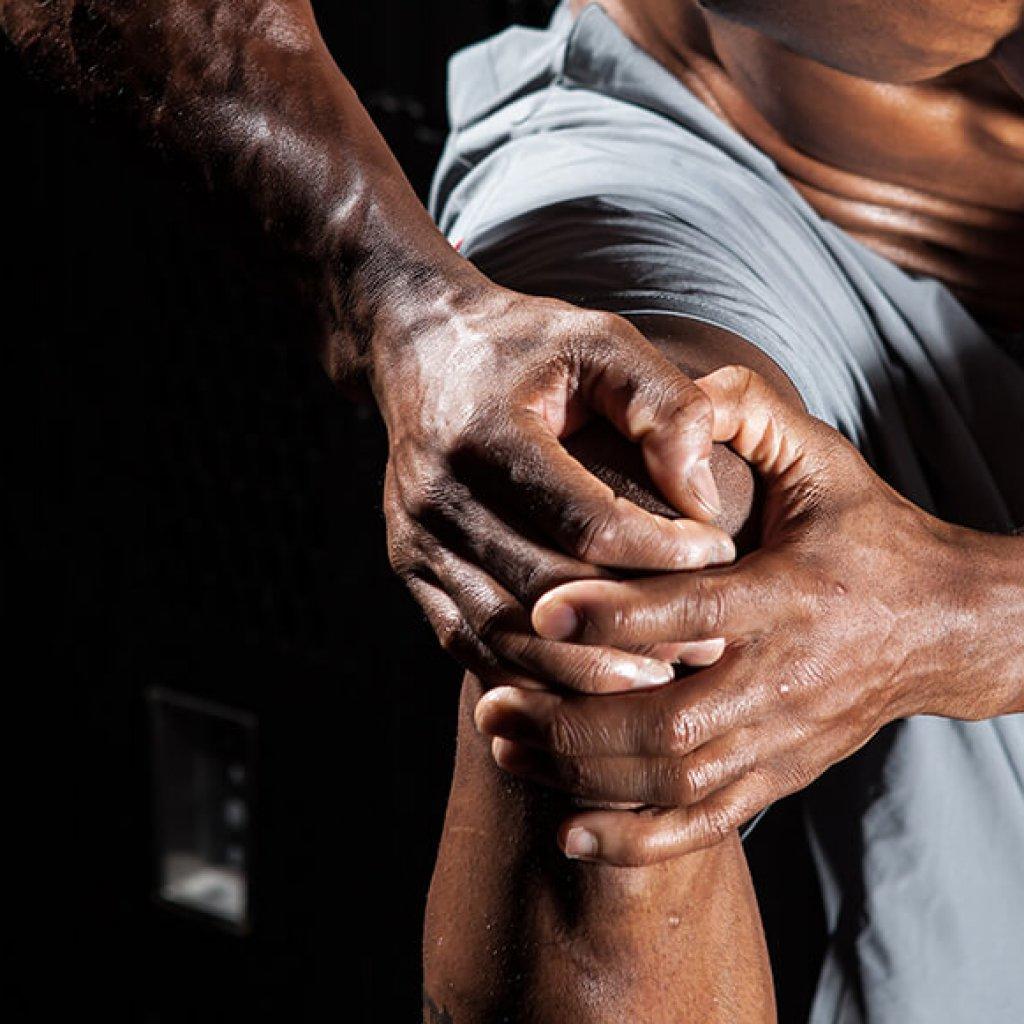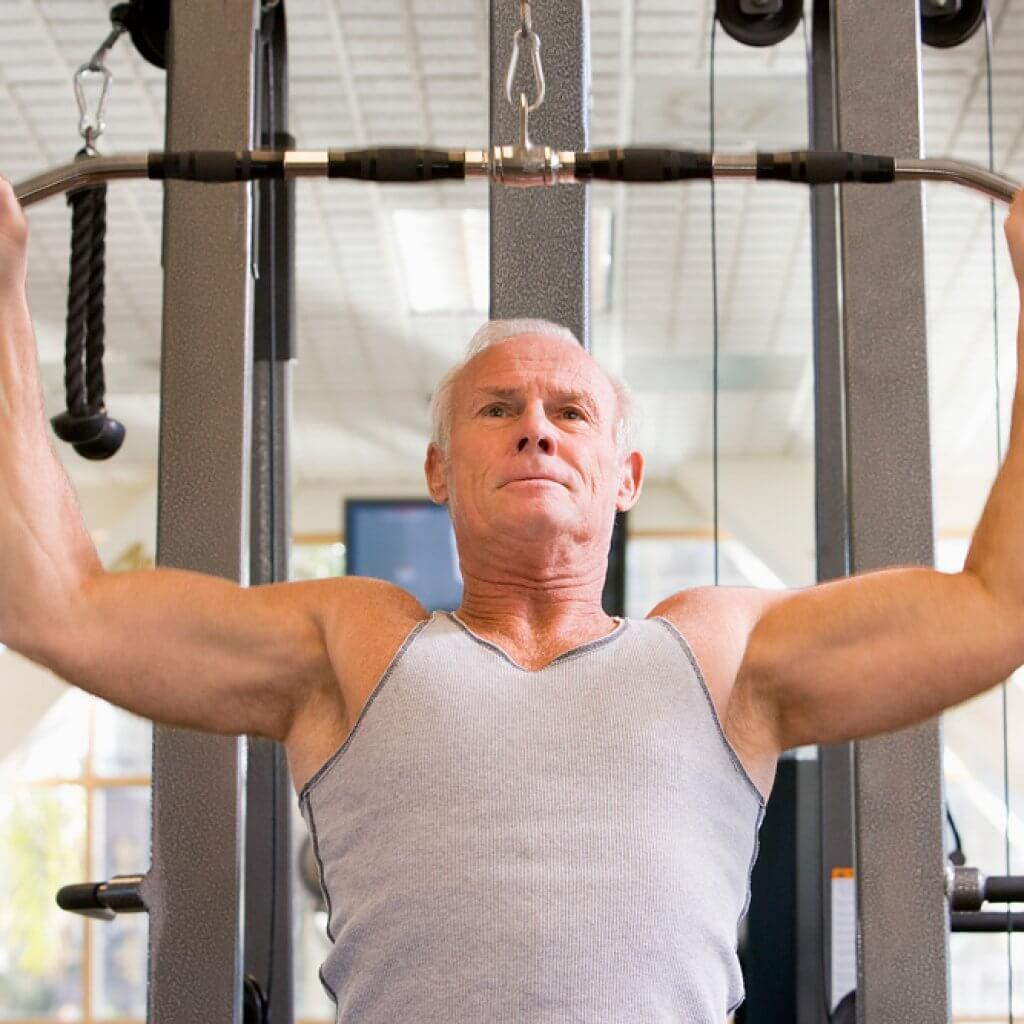Running Injuries in Runners Over 50

Some runners actually look forward to moving up to the over 50 or master’s age groups in the racing world. On the local level, that category might thin out a bit and your chance of bringing home some hardware on race day may be greater.
But along with the potential for greater fame and fortune, comes the potential aches and pains and possible cumulative effects of continued physical stress on the aging body. However, there is no need to slow down. Just learn to listen to what you’re your body is telling you and modify your approach when you need to.
What Happens to the Aging Runner?
The decline actually begins sometimes in our 30s and is so slight that it isn’t even noticeable. But, it does continue and throughout the 40s, 50s and 60s increases to about a 1 percent decline per year.
A myriad of things happen. Your VO2 max and muscle mass both decrease. The cumulative wear and tear on your body limits your flexibility. Your lung elasticity and bone density decline. Metabolism slows and body fat increases. The immune system weakens and recovery from anything, such as colds, coughs, other illness, injuries and hard workouts, takes longer.
“As we age, our reaction time increases and our joints have less lubrication,” explains Nicholas DiNubile, clinical assistant professor of orthopedic surgery at the University of Pennsylvania. “Also, our muscles, tendons and ligaments are less elastic. The Achilles tendon in the bottom of the foot is a good example. It becomes fatty, spongy, and tears much more easily.”
These changes are likely to impact senior citizens who exercise regularly, the number of whom continues to grow.
What Types of Injuries Are Most Common in Older Runners?
The most prevalent injuries in the general running population are over-use injuries and the same holds true for those who are over 50. Also, the cumulative effects of years of running may start to catch up with you and existing conditions that didn’t bother you previously, may start to cause pain and discomfort.
Injuries that plague younger runners are also common in older runners. Things like back pain, bursitis, stress fractures, knee and hip issues, Achilles tendinitis, plantar fasciitis, shin splints, bunions, calluses, Morton’s neuroma, and a host of others certainly continue to be diagnosed.

There are however, two main sources of potential pain and injury among older runners that are less common in those who are under 50. The first is osteoarthritis, which although not caused by running, can certainly cause pain and discomfort during running and in particular circumstances, when there is abnormal joint stress for instance, can hasten its onset. Aging itself causes a gradual decrease in articular cartilage, which can lead to osteoarthritis. It is also thought that heredity might play a role in developing arthritis. Regardless, the pain, stiffness and sometimes swelling of osteoarthritis can make running and even walking extremely painful.
The second source for potential injury among older runners is the threat of falling due to a decrease in balance as we age. Injuries sustained during falls can include lacerations, sprains, fractures, muscle, ligament or tendon tears, and more seriously, subdural hematomas, which are masses of blood that collect in the brain from a blow to the skull.
Preventing Injuries in Older Runners
To prevent injury and increase flexibility, stretching both before and after a run is a must. Five to 10 minutes of easy jogging and a circuit of dynamic stretching will properly prepare muscles for your workout. A series of static stretches after your run will reset your neuromuscular system and gradually return the body to homeostasis.
To increase balance, try adding yoga or Pilates to your exercise routine. Both also increase flexibility through smooth, static movement and poses. If you don’t have room in your schedule for yoga or Pilates workouts or classes, try to incorporate a few yoga poses into your post-run static stretching. Poses such as tree, chair, mountain, and crescent are all good options to improve balance.

Strength training, including abdominal/core work, helps prevent age-related loss of muscle mass. Stronger muscles help lessen the impact on joints which, in turn, can help prevent injury. A strong core can decrease the potential for back and hip issues and can help stabilize the body, creating better balance and posture.
Allow appropriate recovery time in between tough workouts. As the body ages, it requires more time for recovery. You may find that running every other day allows for a more complete recovery, which can increase the quality of your runs. In addition, incorporating cross-training, such as swimming or biking, into your exercise regimen can still provide a quality workout without the high impact of running.
Using supplemental preventive measures such as massage, manual manipulation/adjustments and foam rolling can also play a part in staying injury-free.
Treating Running Injuries in Those Over 50
Injuries in runners who are over 50 aren’t treated any differently than those who are younger. The big difference however, is in recovery time. As mentioned above, older bodies take longer to recover so don’t be surprised if you don’t bounce back from an injury as quickly as you did when you were in your 30s and 40s. The key here is patience. If you start running when you aren’t properly healed, you risk re-injury or at the very least aggravating the injury so you’ve taken one (maybe painful) step forward but two steps back.
If you can’t run but want to stay as active as you can within your physical limitation, try swimming or biking instead. Depending on your injury, you may be able to modify some high-intensity interval training to fit your needs. And you may still be able to strength train, or do yoga or Pilates on some level.
Of course, if the injury is acute (a potential broken bone or ligament, tendon or muscle damage, for instance), seek medical help immediately. If the injury is minor or chronic in nature but after a reasonable amount of time off or modifying workouts it doesn’t improve, a visit to the sports medicine doctor may be necessary.
Sources
- , Mastering Running as You Age, Web site
- , Sports Injuries and the Aging Athlete, Web site
- , The Joint Myth: Running and the Risk of Osteoarthritis, Web site
- , 8 Tips for Running in Your 50s and Beyond, Web site
Latest Articles
 Is Running on a Treadmill Easier Than Running Outside?Runners have their own preferences, whether it is treadmill running, running outside on the road, or exploring trails. So...
Is Running on a Treadmill Easier Than Running Outside?Runners have their own preferences, whether it is treadmill running, running outside on the road, or exploring trails. So... Is It OK to Use Trail Running Shoes on the Road?While trail running shoes can be used on roads, especially in situations where a runner encounters mixed terrains or pref...
Is It OK to Use Trail Running Shoes on the Road?While trail running shoes can be used on roads, especially in situations where a runner encounters mixed terrains or pref... How to Fix Sore Quads After Running?Rest, ice, gentle stretching, and over-the-counter pain relievers can help soothe sore quads after running. Also, ensure ...
How to Fix Sore Quads After Running?Rest, ice, gentle stretching, and over-the-counter pain relievers can help soothe sore quads after running. Also, ensure ... 10 Fruits With The Most Electrolytes to Replace Sports DrinksThese fruits are high in electrolytes such as potassium, magnesium, and calcium, essential for hydration, muscle function...
10 Fruits With The Most Electrolytes to Replace Sports DrinksThese fruits are high in electrolytes such as potassium, magnesium, and calcium, essential for hydration, muscle function...

